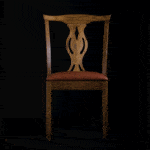Students Spend Many Hours Sitting
Chairs have a significant impact on learning. Students spend hours upon hours sitting and the quality of the chairs beneath them directly affects their schooling. A distracted, fidgeting person gets nothing done. Remaining productive for long periods of time is challenging on its own without added hassle. Comfortable, supportive chairs are therefore essential to any classroom or study space.
Uncomfortable Chairs Negatively Impact Health and Behavior
It’s well-documented that ergonomically inferior classroom furniture negatively impacts cognitive functions. Being physically uncomfortable increases lack of attention, poor concentration, disorganized time management, and diminished memory. How are students supposed to pay attention to the lesson in front of them when their back hurts? Things like bad posture can have lifelong and far-reaching effects down the road. Supportive chairs allow better oxygen flow to the brain, blood flow, and core strength. Creating an ideal space for the mind and body is integral for academic performance. Good chairs promote healthy bodies while enhancing student productivity and overall happiness.
Yet, for how important the furniture in a study space is shown to be, 40% of students don’t feel comfortable sitting in their chairs while they learn. Their success in the classroom is almost certainly hampered by this. Having a good chair under you is the foundation to support academic growth and prosperity.
What Chair Features Are Important?
Now that you know how important chairs are to a student’s health and educational performance, what features make a chair comfortable enough to work in the classroom? There are three main key factors to consider: support, mobility, and adaptability.
Support
Support is an important feature relating to how chairs affect learning. While sitting for long periods of time, you want to make sure your students have good posture and a supported back. Without adequate lumbar support, students will find themselves hunching over which rounds the shoulders, crunches the lower back, and forces the head too far forward. This can cause abdominal strain, headaches, neck, and back pain. Seats that are too hard can cause tailbone numbness and hope problems. When shopping for classroom chairs, make sure you check the lumbar and seat support.
Mobility
Another factor to consider is mobility. Do you want chairs that have wheels or are stationary? Traditionally, most seats for students have been unable to move around the study space, bound to one particular spot in the room. But there has been a trend recently toward wheels on classroom chairs so that they more resemble mobile office chairs. However, that might not always be the best thing for easily distracted people trying to learn, so do the research and decide what’s best for the students in your institution. To read more about how collaboration can be fostered thanks to rolling school chairs, click here.
Adaptability
It’s integral to make sure classroom chairs are adaptable to your space. We recommend investing in chairs that are easily moved and stackable. Stacking chairs allow for easy seating arrangement transitions as well as regular cleaning, not to mention saving tons of storage space. Eustis Chair has unbeatable stacking chairs that can quickly and efficiently be moved around with a transporter.





































